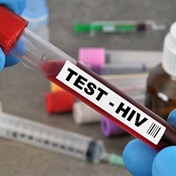
Less than half HIV positive teenagers are on antiretroviral therapy (ART), new research has found.
Young people between the ages of 15 and19 had lower ART initiation rate than in younger individuals. The 2019 study published in The Lancet HIV measured the number of adolescents accessing HIV care and treatment from the ages one to 19.
The study used data of more than 700 000 blood samples of people entering into care from the National Health Laboratory Service. The results show that the number of adolescents accessing treatment and care increased 10 times more between 2005 to 2008 and 2013 to 2016. The factors that caused the peak in adolescents getting treatment was due to infected infants who received treatment from birth and the number of adolescents aged 15 to 19 seeking care for the first time.
South Africa may not achieve its goals
But there is a shortfall of young people in their late teens who start treatment after diagnosis, which is below the targets set for South Africa.
According to the 90-90-90 targets set by international HIV organisation UNAIDS, South Africa should by next year have 90% of all people living with HIV know their HIV status, 90% of all people with an HIV diagnosis will receive sustained antiretroviral therapy and 90% of all people receiving antiretroviral therapy will have viral suppression.
Low rates of ART initiation shows that current models of HIV care are not meeting the unique needs of adolescents, the research states.
Dr Mhairi Maskew is the lead author of the study and a principal researcher at the Health Economics and Epidemiology Research Office. She says that there is a need to adopt an approach that appeals to teenagers accessing treatment.
“The public sector in South Africa has traditionally been a very facility-based approach, you go to the clinic, and you get tested at the clinic, they refer you for treatment and you come back for your follow up visits etc. Its very facility-based and I think that that type of model does not meet the needs of the adolescent population very well,” she explains.
“Most 15 to 19-year-olds, we would hope, are still accessing their senior school years, and some are tertiary education. These very repeated clinic visits and the burden of monthly medications pickups, just from a time point of view, isn't that straightforward.”
Young women are more vulnerable
The study also revealed that 88% of these teenagers between the ages of 15 and 19 are young women. According to South Africa’s latest HIV plan, girls and women between the ages of 15 and 24 have the highest new infections of any age or sex cohort. In 2016, this group accounted for almost 40% of new infections.
Despite having high HIV incidence rates, they are also not accessing treatment, Maskew says.
“For most age groups, new infections are actually on the decrease. So the numbers of these of this age group are is rising, but at the same time, they are the least likely compared to other age groups to successfully link to ART care.”
Maskew explains that this could significantly impact the progress towards South Africa meeting the 90-90-90 targets.
Now, if you can roll that out over the next couple of years, you can imagine this exponential growth in people infected with HIV, but are not successfully accessing treatment. It could significantly impact on the 90-90-90 goals.”
Finding new ways
Experts like Maskew say that the research shows there’s a need to find new ways of getting teenagers into the healthcare system that is not facility-based.
She says that initiatives such as youth clubs could be one of the avenues used to get more young people on treatment.
“Youth and adherence clubs have shown tremendous promise, in terms of being an acceptable and achievable way for adolescence to remain in care.”
But she warns that despite their success, youth clubs are limited to very few young people.
“The only problem with youth and adherence clubs is they're only accessing children and adolescents who are already on treatment. So they're not addressing the earliest stages of the care cascade in terms of prevention and successful linkage to treatment.”
Maskew says that this calls for more creative ways of getting the youth to successfully be initiated on treatment.
“We need to start thinking about creative solutions, to actually increase our success rate in terms of linking adolescents to do access testing and services. How do we successfully link those children into successful sustained ART, where they could join a youth club adherence can be maintained successfully on treatments.
"And so this is a couple of being innovative things are still really they are, the home-based testing is now a reality. However, would need to be supported.”
She says the answer of increasing accessing to ART may lie in technology.
“We need to think about how to adolescence like to access information. We live in an era where access to smartphones and mobile technology has never been wider. And I feel like, in the healthcare arena, we're not really harnessing the potential of mobile technology.
“If you wanted to support home-based testing, they could be mobile apps, for example, that could offer video information and tutorials and, this kind of stuff in terms of how to do the test and what the results mean. And then link young people to care.”
– Health-e News
Image credit: iStock




 Publications
Publications
 Partners
Partners















